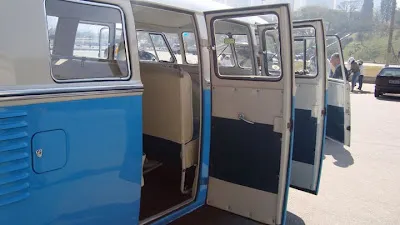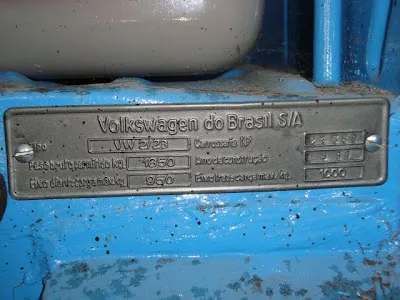A 6-door Kombi is undoubtedly one of the rarest and most iconic versions of one of the most beloved models in automotive history. Over the decades, the Kombi has established itself as a true symbol of versatility and functionality, but the six-door version stands out for being a specific model and limited production. Launched in Brazil in the 1960s, this model became part of a historic moment in public and private transportation, especially in large Brazilian cities. If you are looking for a piece of automotive history and want to understand more about this unique model, keep reading, as we will explore the origin, characteristics and impact of the 6-door Kombi in Brazil.
The Origin of the 6-Door Kombi
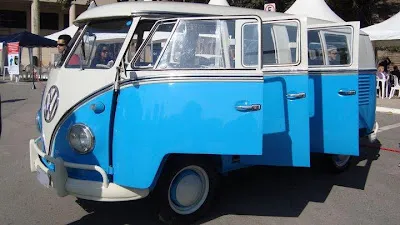
The history of Kombi begins in the 1950s, when Volkswagen decided to produce a versatile model that could handle both passenger and cargo transportation. This model, initially called the Volkswagen Type 2 and better known in Brazil as Kombi, would become one of the most popular cars in the country. The 6-door version, however, was a rarity that appeared in 1961, with the aim of meeting a specific need for public transportation in large Brazilian cities.
In cities like São Paulo, the public transportation system was beginning to become overloaded. The public transportation model capacity, which offered an alternative and more comfortable means of transport for passengers, emerged as a solution to the lack of suitable options. The 6-door Kombis were then adapted for this purpose, offering greater passenger capacity, with the additional doors making it easier for people to get in and out. However, this specific version of the Kombi was not created for mixed use, that is, it would not be used to transport both passengers and cargo, like other versions of the model.
The 6-Door Kombi in the Context of Brazilian Mobility

In the 60s and 70s, Brazil was experiencing rapid urban growth and the lack of adequate public transport became a challenge in large cities. São Paulo, for example, was a city where public transportation was expanding rapidly, but could not meet the growing demand. In this scenario, 6-door Kombis played an important role. They were more comfortable and faster alternatives for people who needed to get around the city.
These Kombis were mainly used for capacity. Unlike conventional buses, which were crowded and uncomfortable, vans offered a larger and more comfortable space, allowing people to travel long distances in greater comfort. For van drivers and owners, these Kombis were an interesting option, as they could accommodate a larger number of passengers compared to conventional models.
In São Paulo, for example, even the taxis adapted to this new form of transportation. In the late afternoon, some taxis would turn into vans and drive around the streets to pre-established destinations, offering passengers a more comfortable alternative. The popularization of 6-door vans for vans was a response to the need for transportation in a changing urban environment.
The Manufacturability and Characteristics of the 6-Door Kombi
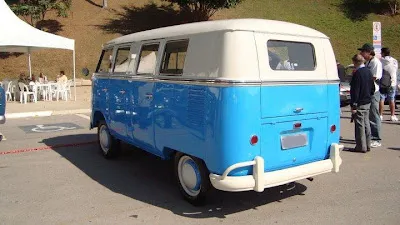
The 6-door Kombi model was a version exclusively Brazilian. Although the Kombi was manufactured in several countries around the world, the 6-door version was never produced outside of Brazil. This makes it a true rarity and an object of desire for collectors and classic car enthusiasts.
A 6-door Kombi had a striking characteristic: his enlarged side, which allowed for the inclusion of additional doors. With the extra doors, the Kombi lost some of its flexibility for mixed use, which has always been one of the model's greatest strengths. The cargo capacity was compromised, since the addition of doors compromised the space available for transporting goods.
In terms of design, the 6-door Kombi was not very different from the standard version, with some specific modifications to the rear and sides. Its engine and mechanics were the same as the more traditional versions, which allowed it to maintain the same reliability that consecrated the Kombi as one of the most durable and versatile models in history.
The 6-Door Kombi in the Collectors Market
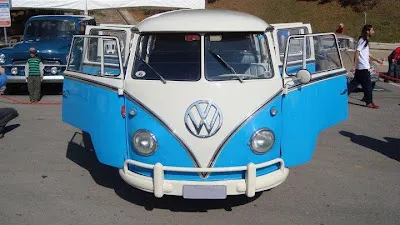
Nowadays, the 6-door Kombis are extremely rare. Their value on the collectors' market has skyrocketed, mainly because production of this model was limited and it was never manufactured on a large scale. If you are thinking of acquiring one of these rarities, be aware that the price can vary greatly, depending on the condition and originality of the vehicle.
A 6-door Kombi from 1961, for example, was recently sold for values that exceeded R$ 1 million at auctions and sales platforms specializing in classic cars. This is due not only to the rarity of the model, but also to its historical importance in the context of Brazilian transportation. The price of a restored 6-door Kombi can vary depending on the condition of the vehicle, the modifications made over time and the documentation that accompanies the car.
A restoration The age of these Kombis is also a factor that directly impacts their market value. As these vehicles are over 60 years old, it is common for many of these models to undergo a complete restoration process, with original parts and specialized work to preserve as much of the car's original appearance and characteristics as possible. These restored cars can reach even higher values, especially at specialized auctions or in transactions between collectors.
The Kombi Clipper: The Evolution of the 6-Door Kombi
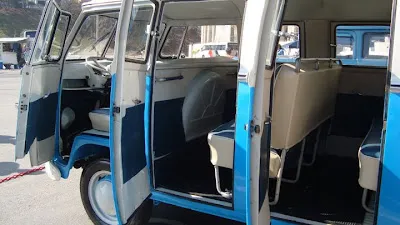
In the 70s, the Kombi underwent some changes, and the 6-door version continued to be produced until 1976, now under the name Kombi Clipper. The Clipper model was an evolution of the traditional Kombi, with some aesthetic and mechanical modifications, but maintaining the versatility that made the model famous. Production of the 6-door version continued until the end of the decade, but, as already mentioned, the number of units produced was extremely limited.
A Kombi Clipper The six-door model continued to be used primarily for passenger transportation, but as the public transportation system expanded, this model became increasingly rare on the streets. Many of the surviving units ended up being modified for other purposes, which makes them even harder to find today.
The Rarity of the 6-Door Kombi in the Current Market
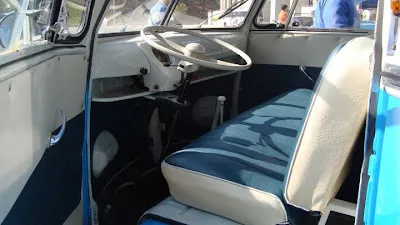
In 2024, the 6-door Kombi continues to be one of the most coveted rarities in the classic car market, especially in Brazil, where its historical and symbolic value is immeasurable. If you are thinking of acquiring a 6-door Kombi, know that this will not be an easy task. In addition to rarity, the high price charged for these units on the collectors' market means that a considerable investment will be required.
Currently, the 6-door version of the Kombi is considered a collector's item and, depending on the conservation status of the model, it can be found for values higher than R$ 1 million. Many of these units are in restoration or have already undergone a renovation process so that their history and authenticity are preserved.
Conclusion: The 6-Door Kombi as a Historical Heritage

A 6-door Kombi is, without a doubt, a historical heritage from Brazil. It not only played a role in the evolution of public transportation in large cities, but also became a symbol of a period of great urban and social transformation. The rarity of this model, its limited production and its symbolic value make it a coveted piece by collectors and classic car enthusiasts. If you have the opportunity to find a 6-door Kombi for sale, be prepared to invest in a piece of Brazilian automotive history – a legacy that, although rare, still lives on in the hearts of Brazilians who are passionate about classic cars.
If you consider yourself a true classic car enthusiast and are willing to invest in this heritage, remember that the 6-door Kombi is not just a vehicle; it is a true piece of history that represents much more than the public transport of the time.
